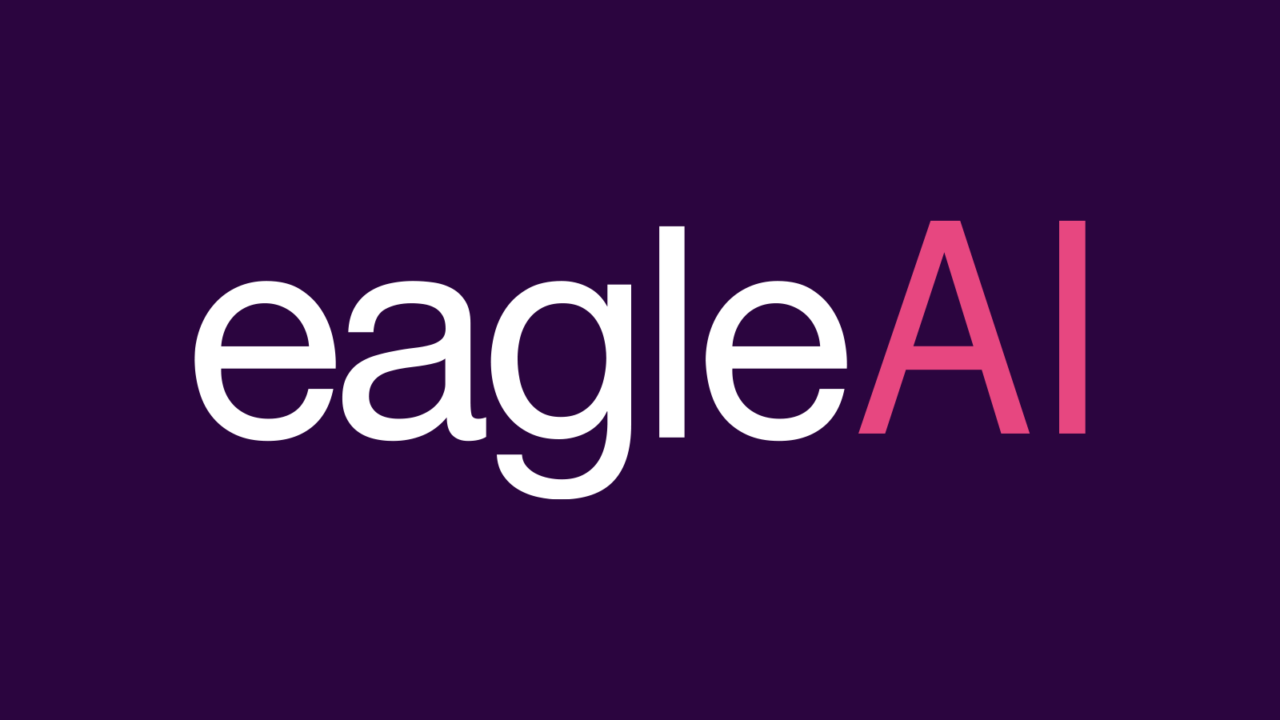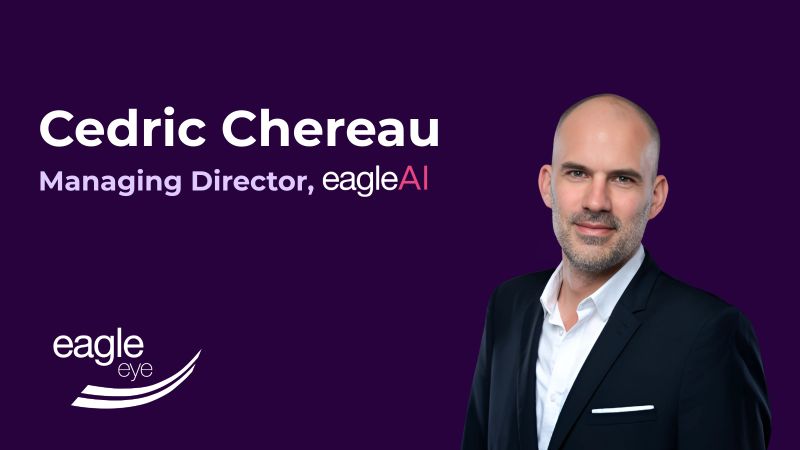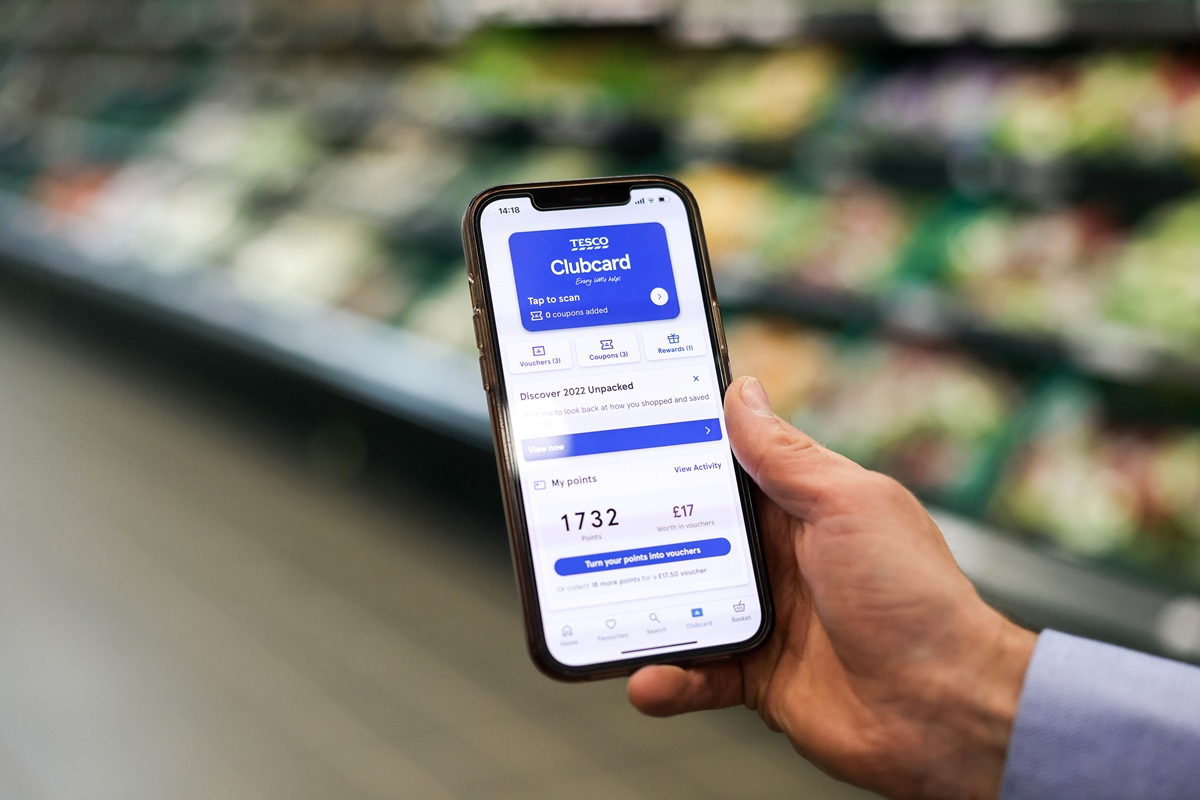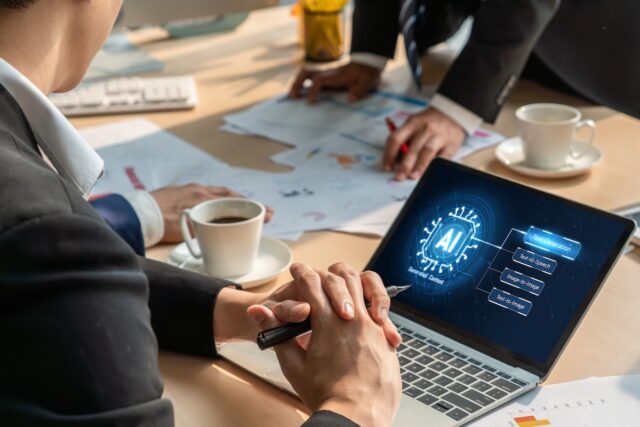June 25, 2025
EagleAI’s Cédric Chéreau Talks Helping Tesco Personalise and Boost Transactions

UK supermarket Tesco has 22 million Clubcard customers and 18 million Tesco app users, but how to create individual offers based on the massive amount of data? CXM recently sat down with Eagle Eye’s EagleAI division head, Cédric Chéreau to discuss how the chain is personalising those many interactions, driving ROI through smart offers and challenges for customers.
Can you give us a background or if you will, how did this all come about?
We started to talk with Tesco around a year and a half ago. And their initial intention was to find a solution that would help them to personalise even more because they’ve already personalised a lot of elements of their loyalty programme. Also to help them to digitise their customers.
They already had an app and all these things, but they really wanted to accelerate and they were looking for something that could help them on that front.

How does the solution that they’ve taken from EagleAI, how does it help fulfil those two things?
Our solution, Personalized Challenges, is a plug and play solution that doesn’t require a lot of integration investment but can still be seamlessly integrated into the mobile app and the website of our retail clients.
Each challenge is completely personalised: the brands are relevant for each individual, the spending thresholds depend on their customer behaviors and the reward associated depends on their promotional sensitivity.
With all these combined, it makes the perfect match to reach Tesco’s objectives: more personalised offers and an incentive to use the digital assets more often. One of our European clients experienced a 60% increase in their active app users when Challenges were active in the app.
How is it personalising Tesco’s offers?
What we’re doing with EagleAI is we’re building on the fly completely individualised offers for each customer, and I’m insisting on this, it’s not a segmented approach, it’s really one-to-one. So, it’s understanding the customer behaviour of each individual and understanding the potential of each person to define the right parameters of an offer.
Let’s start with a very simple example. We both like cola, but I drink much more than you. I have three kids and they’re completely crazy about cola. So, your natural behaviour at Tesco is to spend £10 on cola a month. My natural behaviour on cola at Tesco is £30.
Because we’re different, and you do almost all your shopping at Tesco, and I also shop at other stores that are competitors of Tesco. You can receive an offer tomorrow that if you buy £12 of cola next month, meaning that you would spend a little bit more, but the deal is very aligned with what you’re spending naturally.
And I could receive an offer with a reward that if I spend £50 on cola, meaning I need to buy a little bit more, not more in general. I just need to be a little more loyal to Tesco and buy a bigger share of my spending on cola in their stores, instead of hopping around with other retailers.
So, where does the magic happen?
The magic is that we don’t have to create the offers one by one; this is the job of AI. The machine is looking at each individual customer and we’re addressing millions and millions of customers with not only cola, but for all the brands and products that you can think of at the same time, and the machine is creating all the variances of all the offers at the same time.
You accumulate the rewards in the mobile app based on what you’re spending during the whole month. So, it’s not on one transaction, it’s on the whole month. At the end of the campaign, you get all the accumulated rewards from all the spending.
The intention with the Challenges, the personalised Challenges, is to identify the right products and the right brands for each customer.
What we’re also doing with the AI is identifying very strong brands for each customer individually. So, of course, we’ll find bananas and cola because those food products are very important to the customer. The great thing about AI is that we will be able to identify that very niche Italian cheese that you buy on a regular basis.
And we know, because of the AI algorithm, that the product is very important for you as a customer. So, we’ll do a mix and match between the big blockbusters and the more niche products or brands. Making it is very appealing to customers.
Would it recommend things to go along with a wine I buy?
Absolutely. It is not necessarily built that way, but it is exactly what it’s doing. An important concept at the core of the solution we developed is customer centricity. We are looking for the right brand for each customer; we’re not looking for the right customers for each brand. That’s very, very important.
We’re looking at everything that you’ve bought in the past and over the last 12 months. This allows us to see the connections between the products that you’ve purchased and uncover similar patterns among other customers.
We can see that customers with similar buying patterns are purchasing products that you have not yet. Maybe we can suggest a product that you should like because your lookalikes are buying it. It’s not necessarily looking at the connection between the products, not in a way that a human could understand it.
For example, I like wine and cheese, but maybe the AI will say you like wine, you like cheese, you should like that laundry product, which doesn’t make sense for us, but it’s seen the pattern from a data perspective.
How come you’re able to get this up and running so quickly?
That’s a very, very good question. The beauty of the solution that we developed, the personalised Challenges, is that it’s an end-to-end solution. For example, a grocer or retailer just needs to share their customers’ past transactions with us, and then we can run our algorithm and set up the solution and the whole platform within a few weeks. We don’t need a lot of interaction with our partner, and we don’t need them to develop something specific in their system.
We take care of almost everything. The only thing that Tesco is validating is the product images, the way the page will look, the design, of course, and the offer, but we take care of everything else for them. And that’s why it is so quick in five weeks, as soon as we have access to the data, we can have the Challenges up and running.
After the pilot, Tesco targeted 10 million customers with the Clubcard Challenges from our platform. And we offer up to 20 different challenges for each individual customer. Each offer is completely personalised with retail challenges for each customer.
Depending on each customer, the challenge threshold is completely personalised and the rewards are also completely personalised. So that’s what I’m saying, everything is completely personalised for each customer.
And how successful has the project been?
I can share some insights specifically from Tesco, based on their Christmas trading statement. Ken Murphy, CEO of Tesco, stated that the personalized Clubcard Challenges, offered to 10 million customers over the festive period, contributed to record levels of digital engagement.
He recognises the role that the personalised challenges played in driving customer digitization. In terms of KPIs, what are we seeing? We see, because it’s incremental by design, the way that we build the solution, you cannot earn anything unless you spend a little bit more with the retailers. So, it is incremental by the retailer, and the brands can’t lose in that game.
And the customers can’t lose either because all the challenges are designed to correspond to their shopping behaviour. Once again, from the beginning, it’s customer-centric. I mean it’s the core of the philosophy. For every pound distributed as a reward, we’ve calculated—based on data from the retailers we work with—that it generates at least £7 in incremental sales on average.
Is this a deliberately gamified approach?
That wasn’t intentional on our part. But I would say it came as a cherry on the cake, as the idea was to personalise the offers to make them more efficient and more relevant for customers. That’s the mission we had at the beginning, and we realised after the first few campaigns that it was actually a little bit gamified.
We put a little more work into the gamification thing. But it came afterwards, if you see what I mean. It was not intentional at the beginning. It was more about how we can be more relevant and smarter in the way that we personalise promotions.
For clarity, can you explain the difference between Eagle Eye and EagleAI?
EagleAI, as I said, is this personalised loyalty platform that is executing the smartest loyalty programme in the world. Eagle Eye is a parent company, working with Woolworths in Australia, Asda, John Lewis, and Waitrose in the UK, as well as places like Loblaws in Canada. We’ve been around for 20 years and work with some of the world’s largest retailers. EagleAI, the company I co-founded, is a newer venture based in Paris and was previously known under a different name. But that company was acquired by Eagle Eye two years ago.

Adding to the conversation, Shama Wilson, Tesco Group Membership and Loyalty director, said, “Clubcard unlocks the best value from Tesco, and we are constantly looking for ways to offer even more to our customers. Millions of people tap their Tesco Clubcard when they shop, benefiting from thousands of exclusive deals through Clubcard Prices across food, clothing, Tesco Mobile and Tesco Bank.
“Clubcard Challenges is a brilliant way for customers to collect up to £50 worth of extra Clubcard points, which when used with our 100+ Rewards Partners could be worth up to £100. The personalised challenges and rewards are based on customers’ individual spending habits and are a brilliant example of how we are moving towards greater personalisation through Clubcard.”
It will be interesting to see how other loyalty cards and supermarkets respond in making offers more personalised and driving greater spend and loyalty.



